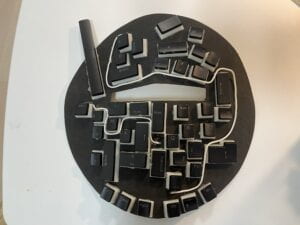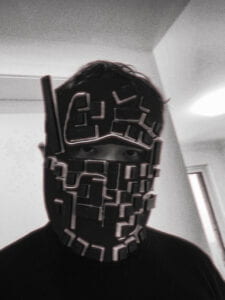W4
Quotation: “Thus the dandy style emphasized the artifice of appearance, the self as performed and perfected through self-conscious use of dress and the body, while the Romantic style was concerned with authenticity and the self as ‘genuine’ and ‘natural’”.
Comments: I think these two states occur simultaneously, reflecting people’s different social needs. While we are trying to perfect our self-identity through the self-conscious use of dress and the body, we are also pursuing a sense of collective recognition of belonging to a certain social class or group. For instance, students are required to wear school uniforms throughout their primary, middle, and high school education, and is regarded as the symbolization of this particular school. But this doesn’t stop students from wearing other stuff like shoes or glasses to demonstrate their unique personality, serving both as a representation of their true selves and also making their existence more outstanding to distinguish them from other students. So I would argue that these two trends are converging on one social pursuit, which is to make the first impression of the self as close to the true self-identity as close as possible, but with different focuses.
Quotation: “Fashion embraces not only the desire to imitate others and to express commonality but to express individuality”.
Comments: I think the house system in “Paris is Burning” well reflects this idea of the mixed desire of integrating commonality and individuality. Though some dancers come from one house, there is still a sharp difference in how they dress and what elements they are going to include in their performances. The commonality here is more spiritual guidance, such as what the overall feeling should the dancer build so that the audience can get their ideas. It’s something bigger and sometimes vague in its physical representation approaches. But individuality is something down to earth, the exact actions taken by every participant reflect their unique personality.
Quotation: “What we see is their gender appearance and we assume that this is an accurate indication of their sex’ (Woodhouse 1989: 1). Thus ‘seeing is believing’ even though people can and frequently do ‘cross-dress’, sometimes very convincingly”.
Comments: In reality, since I was a kid, I was told that a man should wear as a man and a woman should look like a woman. This conventional idea of making clothes as a medium to reinforce biological identity is a measure of reversing the causality. I think the clothing should reflect how we want others to perceive us as the first impression rather than repeatedly emphasizing what’s already exists and obvious to others.
Mask Design
For this week’s mask design, I use keyboards as the material to cover the mask. I first try to find the commonality behind wearing masks. We wear face masks because we are afraid of the spread of the virus. Kidnappers wear masks because they are afraid of being recognized to conduct illegal activities. Students wear masks in the fabrication lab because they are afraid of wood bits will hurt their eyes. In short, the main motivation facilitating us to wear masks is that we are afraid of something and thus, we wear them to protect ourselves from getting hurt.
Relating it to the ubiquitous cyber violence happening on the Internet these days, I use keyboards as the raw material to express my concern about the future atmosphere in the net community and also my self-identity as someone who is willing to use keyboards to stand up and fight against those nasty words on the Internet, hoping to, at least, do my best to form a more harmonious net environment.



